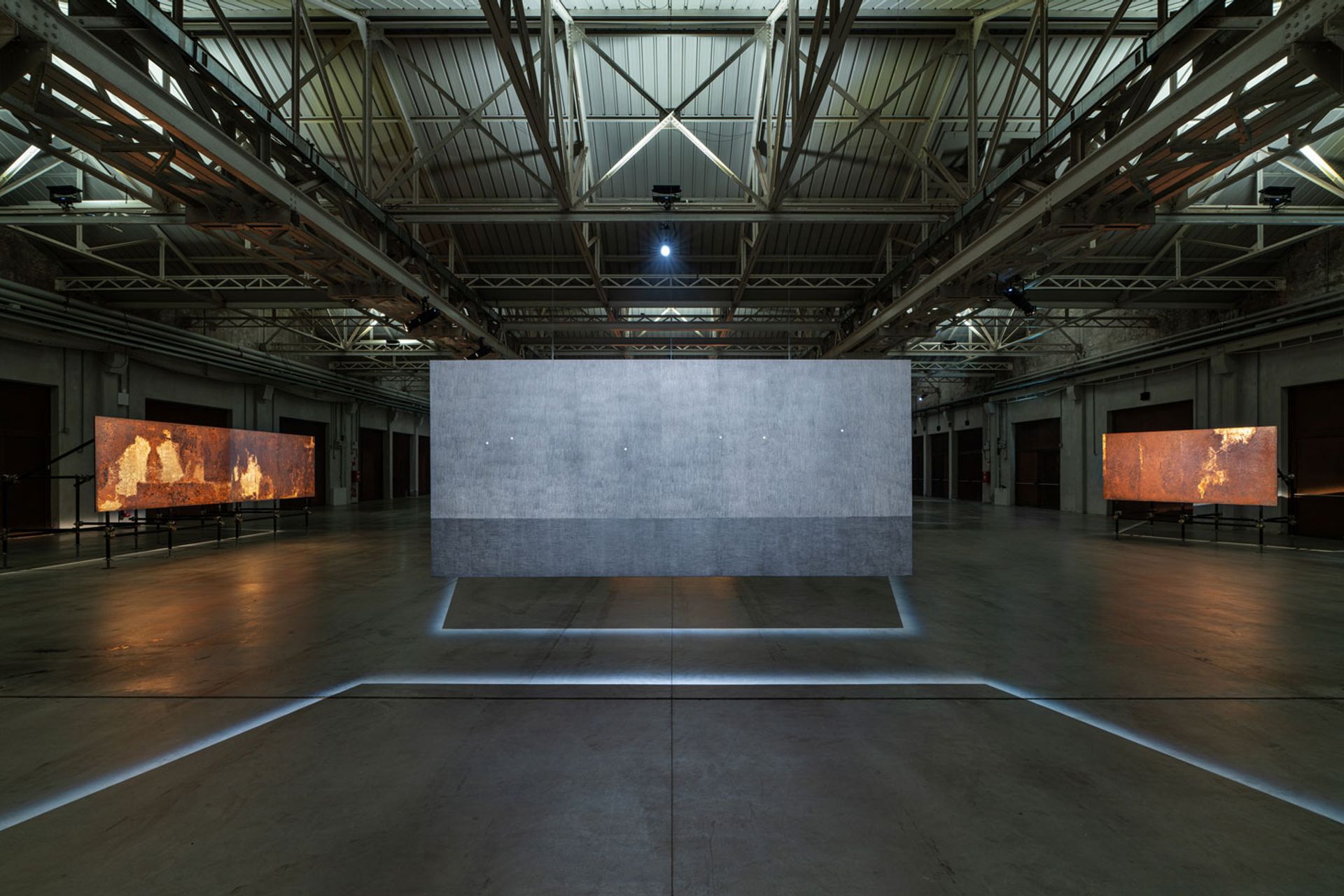Gian Maria Tosatti’s site-specific projects are often executed over a number of years, filling entire cities or spanning national borders. In Sette stagioni dello spirito (2013-16), Tosatti’s installations in seven abandoned buildings in Naples explored the extremities of good and evil, while Landscapes (2006-11) was a series of public artworks in areas of urban conflict. Now, the Rome-based artist, who represented Italy at the Venice Biennale last year, has condensed some of his sprawling projects into a retrospective at Milan’s Pirelli HangarBicocca.
It is different kind of retrospective to the norm, Tosatti says. The artist has made a whole set of new works for the show, rather than recycling old ones; he says creating them has been about re-exploring the emotions he felt while realising his projects of the past. Even so, Tosatti says, visitors will have personal reactions to what they see. As if underlining the works’ subjectivity, he has chosen an ambiguous title—NOw/here—which can be read in more than one way depending on the viewer’s perspective.
The exhibition had “an extremely long gestation”, Tosatti says, and is the product of a “very challenging process of reflection and decision-making”. The artist created the new works in two phases: one during the pandemic and another after the Venice Biennale. A recent essay published by Fondazione La Quadriennale, which proposes today’s art scene as a synthesis of an older politically-oriented generation of artists with a younger existential one—two generations Tosatti, who was born in 1980, says he feels he straddles—helped shape his vision for the show. Tosatti explains that the two different bodies of work in the show, Portraits and NOw/here, “represent two different feelings and moments”.

Installation view of NOw/here at the Pirelli HangarBicocca Courtesy the artist and Pirelli HangarBicocca; Photo: Ela Bialkowska, OKNOstudio
“Portraits (2022) metaphorically combines two opposites, two symbolic but also very precise materials: gold, an element I’ve often used, incorruptible and highly symbolic, linked to the sacred, and rust, which is the pure corruption of an element,” Tosatti says. “We thus have the incorruptible and the corrupt, materials that cannot bind and yet in our work we have found a way to have them seek each other out, and penetrate each other, tear each other apart, and compromise each other.” For NOw/here, Tosatti used graphite and white charcoal on ten large canvases, hung from the institution’s ceiling. Tosatti adds that painting is the foundation of all his work and in NOw/here he has chosen to acknowledge that by using “the first element a painter uses: the graphite of a pencil for the very first sketch”.
• Gian Maria Tosatti: NOw/here, Pirelli HangarBicocca, Milan, until 30 July


